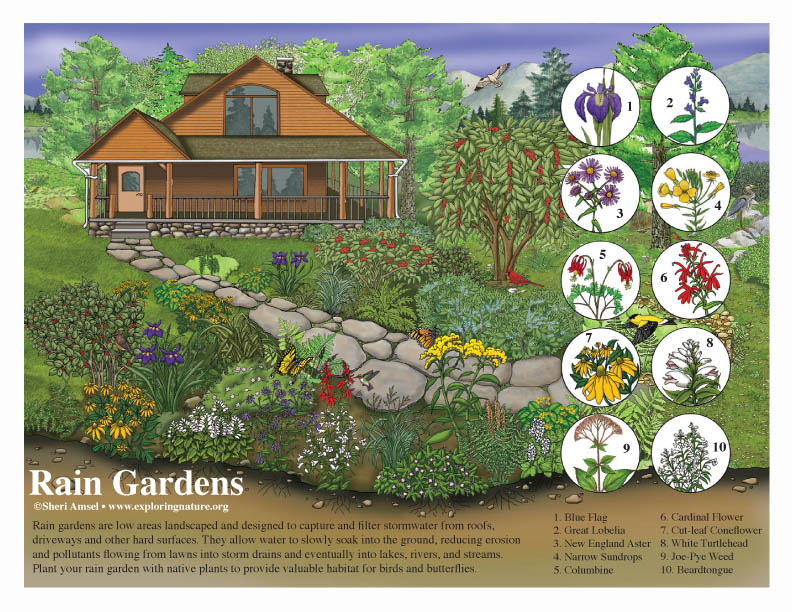

When building houses and paving roads, driveways and sidewalks, we create pathways for litter, debris and pollutants to run off into storm drains, rivers and lakes. This can also cause erosion that damages infrastructure. One solution that is gaining traction with some developers is the creation of rain gardens. Rain gardens are low lying areas landscaped and designed to capture and filter storm water and allow it to slowly soak into the ground. This reduces erosion, street flooding, and pollutants (from roofing shingles, asphalt, fertilized lawns, septic systems, etc.) from flowing into waterways. It can also reduce the cost of installing expensive drainage systems in new developments. Planted with native species, rain gardens can provide important habitat for birds, butterflies and other insects and be a pretty addition to a community (or school yard).
Design a potential rain garden for your community or school. Here are some ideas. Do some research online into other rain gardens build by communities around the country (or world). Consider a location that is slightly lower than housing and paved areas, but not too close to a wetlands or waterways. You can use google maps to look for a likely spot on town or school land or near where you live (not on private property). When designing the shape and look of your rain garden, choose native plants that will benefit local wildlife. Draw a map overview of its location and design.
For some step by step directions: LINK
When you research information you must cite the reference. Citing for websites is different from citing from books, magazines and periodicals. The style of citing shown here is from the MLA Style Citations (Modern Language Association).
When citing a WEBSITE the general format is as follows.
Author Last Name, First Name(s). "Title: Subtitle of Part of Web Page, if appropriate." Title: Subtitle: Section of Page if appropriate. Sponsoring/Publishing Agency, If Given. Additional significant descriptive information. Date of Electronic Publication or other Date, such as Last Updated. Day Month Year of access < URL >.
Amsel, Sheri. "Rain Gardens - Protecting Waterways - Design Project " Exploring Nature Educational Resource ©2005-2024. December 13, 2024
< http://www.exploringnature.org/db/view/Rain-Gardens-Protecting-Waterways-Design-Project- >
